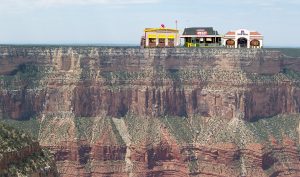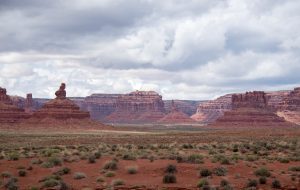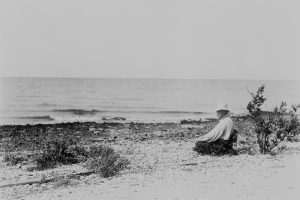
The Antiquities Act of 1906 (signed into law by Republican President Teddy Roosevelt) grants the President the power to create National Monuments from federally-owned lands to protect naturally, culturally, or scientifically important areas. This method of preserving lands has been used more than 100 times since its inception – with great success and little objection.
The Act has been uncontroversial for much of its existence because it clearly is not a federal land grab (the land must already belong to the federal government) and does not disrupt or deny any ongoing leases for grazing or other uses. In fact, some of our most cherished National Parks started as National Monuments, such as Grand Canyon and Muir Woods. Without the initial protection they received under the Antiquities Act, these national treasures would likely have been lost to development, resource extraction (drilling and mining), vandalism, and ruin.
Recently, the Trump Administration issued an executive order directing the Department of Interior to review – and potentially eliminate or shrink – protections from some of our nation’s most pristine national monuments, ranging from the Northeast Canyons and Seamounts Marine Monument in the Atlantic Ocean to Bears Ears in Utah, all the way to Giant Sequoia in California. This move is encouraged along by the oil and gas industry, who want to “drill, baby, drill” regardless of the extreme risk to our waters and public lands.
One of the most prominent places on President Trump’s review list is the stunningly beautiful and culturally significant Bears Ears National Monument in Utah. If you haven’t heard it, the story of how Bears Ears National Monument came to be is remarkable in its own right.

In 2015, an Inter-Tribal Coalition of the Navajo Nation, Hopi, Ute Mountain Ute, Ute Indian Tribe of the Uintah and Ouray Reservation, and the Pueblo of Zuni worked together to craft a proposal that would protect over 100,000 archeological and cultural sites located around the Bears Ears plateaus in Utah. Over two years, Tribal leaders interviewed community elders, mapped cultural sites, collected data, and conducted extensive policy and management research on the area. Meetings were held among Tribes, federal employees, Utah state officials, members of Congress, and the public. This was a major undertaking and involved dozens of key players and public entities.
Members of the Inter-Tribal Coalition have used these sacred lands for all of their recorded history and continue to rely on them for ceremonies and rituals. The Bears Ears plateaus are also a fixture in tribal creation stories. These lands matter to the first Americans and are part of our shared American experience.
In December 2016, using the power invested in him through the Antiquities Act, President Barack Obama declared the 1.35 million-acre site a National Monument. I can only imagine how that must have felt for the tribal leaders who worked together for so long to make this happen. It will be remembered as a major moment in American conservation. Now, the Trump Administration wants to destroy what so many have worked tirelessly to build.
Florida, my home, has two National Monuments and one Marine National Monument (also designated and protected under the Antiquities Act.) The Castillo de San Marcos and Fort Matanzas are both located in St. Augustine. The Florida Keys Marine National Monument encompasses most of the waters in and around the Keys and extends north to almost Miami Beach.
The Castillo de San Marcos is one of my favorite places to visit. (See image in header.) I remember the first time I saw it out of a bus window on a class trip in the fourth grade. I loved learning about the history of Florida and was enthralled with the thought that it all happened right here – right where I was standing. That feeling I had was pride – for my shared cultural heritage as a Floridian and that my country respected the history and the places that shaped our nation.
That’s why I #StandWithBearsEars. And it’s also why I was in Washington D.C. earlier this month to ask members of the Florida Congressional delegation to defend the Antiquities Act and our National Monuments from the Trump Administration’s attacks.

I know that the Castillo de San Marcos is not under specific threat. But a threat to one National Monument is a threat to all public lands. So, to the Navajo Nation, Hopi, Ute Mountain Ute, Ute Indian Tribe of the Uintah and Ouray Reservation, and the Pueblo of Zuni – please know that you have friends in Florida, you have friends across the country, the world, and you have friends at Florida Conservation Voters and the League of Conservation Voters.
We believe in the value of public lands and in the Executive Branch’s power to protect lands and waters when Congress fails to act. Bears Ears and other National Monuments belong to the people of the United States.
And we’ll use our voices and our votes to protect them.
Click here to send a letter to Interior Secretary Zinke on this issue right now.

